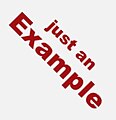Forèlün
Republic of the Forelun islands Repupjiku Forélün | |
|---|---|
Flag
Coat of arms
| |
| Anthem: “For Forèlün!” | |
| Map of Forèlün Map of Forèlün | |
| Capital and | TBD |
| Official languages | Foran, Tagmatian |
| Ethnic groups | Forèlünian, Tagmatian |
| Area | |
• | 91,000–260,000 km2 (35,000–100,000 sq mi) |
| Population | |
• Estimate | 11-30 million |
| GDP (nominal) | estimate |
• Per capita | 15,000-20,000 |
This article or section is in the process of an expansion or major restructuring. You are welcome to assist in its construction by editing it as well. If this article or section has not been edited in several days, please remove this template. If you are the editor who added this template and you are actively editing, please be sure to replace this template with {{in use}} during the active editing session. Click on the link for template parameters to use.
This article was last edited by Katze (talk | contribs) 22 months ago. (Update timer) |
Forèlün, officially known as the Republic of Forèlün, is a sovereign state in CONTINENT on Eurth. It is bordered by NEIGHBOURINGNATION to the north, NEIGHBOURINGNATION in the east, NEIGHBOURINGNATION to the south, and NEIGHBOURINGNATION in the west.
(1st paragraph. Name. Location. Borders. Approx population and size. Capital city.)
(2nd paragraph. Political system. Short history in 1 sentence. Link with present in 1 sentence. Head of state.)
(3rd paragraph. Economy in 2 sentences. International relations in 1 sentence.)
Etymology
The name of Forèlün is believed to have originated from the French word “Forêt” and the Anglish word “Land”. The native name was originally Sa Juri, but this name dropped out of favour following the colonisation of Forèlün.
History
(WIP. How did your current country come to be? What were the country's previous incarnations? Was the country part of a union with a neighbour? Which events shaped the way the country is today?)
Forèlün as a single nation was first proposed in the early 1600s, which at the time was made up of 6 smaller nations. By the early 1700s, The Confederation of Forèlün was established under the rule of King TBD II.
Geography
(WIP. Landscape. Climate. Where exactly is your country compared to others on the global map? Describe the landscape, plants, and animals. Which mountains and rivers are important to include? Describe are the climate and seasons? How does geography determine where people live? Are there areas separated from one another? How about cities? This will greatly help you with the next part of history.)
Politics
(WIP. Government. Separation of powers. Who rules, how, and for how long? Political parties. What levels of government exist? How about the local level? Who makes the laws? Who deals out your justice? Which government services exist? What is the name of your police? How are the armed forces organised? Foreign affairs, alliances, membership of international organisations.)
Economy
(WIP. Employment. Exports and imports. International partners. Currency. Energy. Transportation. Science & technology. Unemployment numbers. Tourism. Media.)
Demographics
(WIP. Demographics. Ethnic groups. Social classes. Language. Education. Marriage. Religion. Healthcare. Diseases.)
Culture
(WIP. Cuisine. Literature. Visual arts. Art. Architecture. Entertainment. Music & Radio. Television. Cuisine. Local customs. Clothing. Morality. Sports. Stereotypes. Your national symbols such as the flag and national anthem. Public holidays and festivities.)

